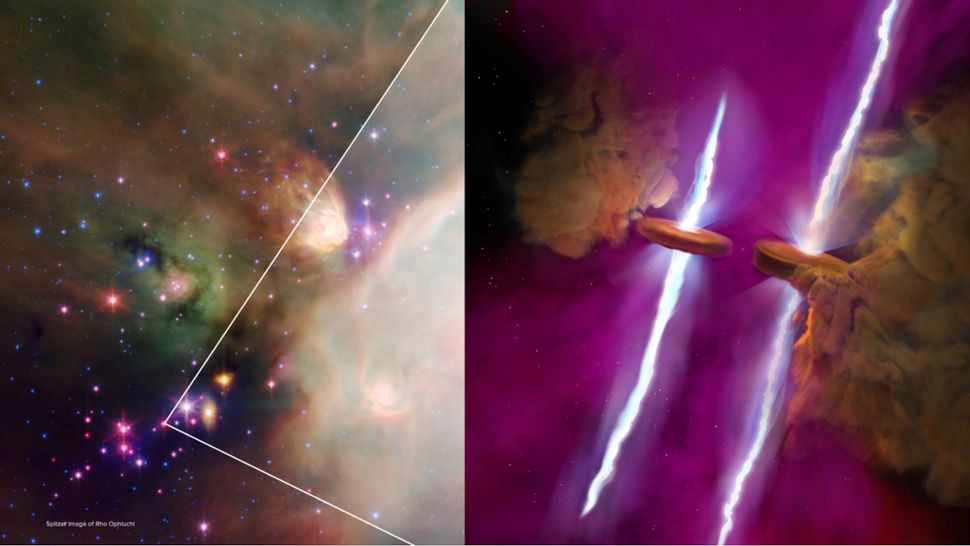James Webb telescope reveals long-studied baby star is actually 'twins' -- and they're throwing identical tantrums
By Harry Baker published 2 days ago
New observations from the James Webb Space Telescope revealed that a distant protostar is actually a pair of baby binary stars that are spitting out parallel energy jets as they gobble up giant disks of gas and dust.

Left: An image of WL20 in the Rho Ophiuchi cloud complex taken by NASA's Spitzer Space Telescope. Right: An artist's impression of the two new stars and their stellar jets based of JWST data. (Image credit: U.S. NSF/ NSF NRAO/B. Saxton.; NASA/JPL-Caltech/Harvard-Smithsonian CfA)
A distant star first spotted decades ago is actually a pair of baby stars that are each spewing powerful energy jets parallel to one another, scientists have discovered.
The unlikely twins were finally identified thanks to the James Webb Space Telescope (JWST), which peered through a dense cloud of cosmic dust to spy the adjacent jets shooting out of the juvenile stars, researchers said.
The newly identified stars are located in the WL 20 system — a small stellar cluster in the Rho Ophiuchi cloud complex, about 400 light-years from Earth. Researchers have been studying this system for around 50 years and have listed a number of stars there, including a baby star, or protostar, designated WL 20S, which was surrounded by a large ring of gas and dust, known as a protoplanetary disk.
However, recent observations from the Atacama Large Millimeter/submillimeter Array (ALMA) — a group of more than 60 radio antennas in Chile — hinted that this disk could actually be two separate disks. Follow-up observations from JWST then confirmed this. The space telescope also revealed the presence of stellar jets, which are made up of superheated material ejected by the stars' magnetic poles as they form.
More:
https://www.livescience.com/space/astronomy/james-webb-telescope-reveals-long-studied-baby-star-is-actually-twins-and-theyre-throwing-identical-tantrums
